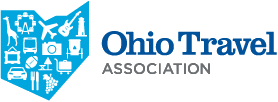Complete Story
01/27/2017
Get Creative with Staff and Board Discussions
Make your Meetings Memorable and Engaging
As a part of an industry that is about innovation and creativity, make sure you are bringing that same spirit to your staff and board discussions. Discussions do not always have to be focused in boardrooms or over long tables in a more traditional sense. For many, meetings are a great place to mix both professional presentations and discussions with something fun and engaging. Whether it is using a white board to start conversations in an open format, taking your staff to a park or inverting an issue, think about using a few of these techniques to get a more productive outcome in your discussions.
So how could you incorporate creativity into a meeting?
Here are a few things to keep in mind:
Try Starting Discussions Through a Non-traditional Method: One great way to engage a lot of the introverts on your team is a non-traditional discussion. For instance, try proposing an issue or idea on a whiteboard or note pad in a common area of the office. Let’s say you are trying to get more visitors to your attraction in the off season. Ask your staff for their input by writing a question on a white board, and you are bound to get more participation. As the week commences, encourage staff to participate by writing down solutions or thoughts. You can even keep the responses anonymous. Then at the next staff meeting or discussion, highlight the ideas that could work for your business. Often, a written form of communication is far less intimidating than verbal communication, and many employers see a higher percentage of participation and creativity through this method.
Focus on Engagement: Providing an entertaining, yet educational, experience for your co-workers or colleagues is crucial in receiving engagement throughout the entire discussion. Engage in both the professional and personal interests of guests to carve out an appealing conversation. During any discussion, it is important to encourage staff or board members to be themselves. Create an environment where people voice their opinions and ideas with limited constraints. One great technique is through introductions and allowing a staff or board to talk about their passion or interests. Make the conversation about them initially, and when you go to bring up points or ideas, they feel as though they are a part of the process.
Bring Associates an Experience: Thinking outside the box in terms of what to include in the meeting benefits the overall conversation. For example, if you are discussing the opening of a new park in your area, have your meeting outside. Use nature as a theme and symbol for your discussion. This creates a focused conversation that links the creative process with the goal or points you are trying to achieve, allowing the backdrop to spark conversations.
Invert an Issue or Idea: Many people start meetings with a linear presentation of an idea or issue. One effective way to creatively engage associates is by coming up with an alternative or inverted scenario. For instance, if the issue is that you need more attendees at an event, try asking staff to flush out ideas that would get you to lose attendees. This inverted approach streamlines what is important about the issue, creating a lateral perspective. From there, it is easier to focus on ideas and creativity, because now you have identified what is important for the project. For instance, you would lose attendees if you do not promote the event via social media or email marketing. This highlights what is important about the project and keeps the conversation focused. So now, maybe you focus on ways to further develop your social media and email marketing campaign. Approaching a topic from the opposite viewpoint provides a unique twist and helps guide the discussion towards new ideas.
Creativity and non-traditional discussion methods create higher engagement. At the end of the day, businesses are better able to lead a fully engaged staff and board. Try these methods to increase conversation and forge a stronger bond among both you, your staff and board.


